Optoma PK201 Review
Optoma PK201
If you’re after a projector that fits into your pocket as easily as an iPhone, this is well worth considering.
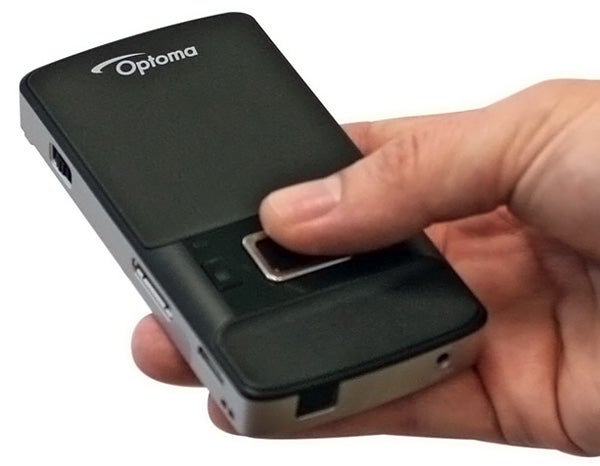
Verdict
Key Specifications
- Review Price: £233.95
Pocket-sized projectors continue to attract plenty of headlines and, apparently, pretty brisk sales. Neither of which is surprising, really, considering their pleasingly brain-bending feat of producing big pictures from tiny boxes.
So far as we’re concerned, the whole pocket projector ‘scene’ was instigated by Optoma, with its PK101. The design of this model still looks like gadget porn nearly two years after its release, but it unfortunately didn’t get pocket projection off to a great start by being a pretty rubbish performer.
More recently, Optoma raised its pocket projector game massively with the new, much chunkier, much brighter PK301, which did pretty well in a TrustedReviews pocket projector group test.
So we’re genuinely intrigued by Optoma’s new mid-range ‘Pico’ projector model, the PK201. For ideally this crossover model will give us the best of both worlds: the outstanding slinkiness of the PK101’s design, and the genuinely useful performance level of the PK301.
The design certainly hits the right notes. Its matt, slightly coarse finish is unusual but likeable, and its tininess is mind-blowing. It’s basically similar in size to a typical smartphone – only instead of a big screen, its ‘business end’ is a small lens at one end of its elongated, palm-sized chassis.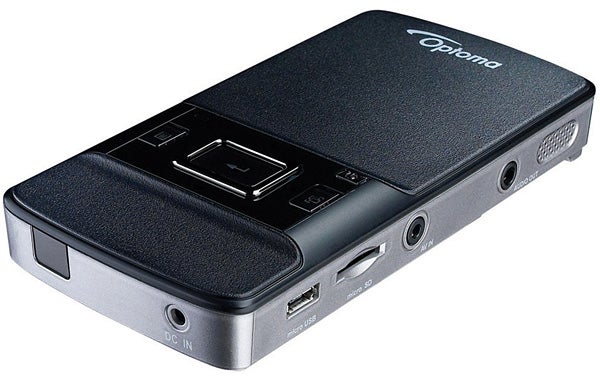
The PK101 still, somehow, looks even prettier. But if the PK201 manages to produce a watchable picture from such a tiny (and at 160g, light) body, then that will more than compensate.
The PK201 outguns the PK101 massively when it comes to features and flexibility. Its connections are much more comprehensive, for instance, including a composite video input, a micro-USB port, a phono audio output, a mini-HDMI, a microSD memory card slot, and a ‘Universal I/O’ input capable of taking D-Sub PC and component video feeds via adaptors.
As you’d expect, these jacks support video as well as PC feeds. Furthermore, the list of codecs the PK201 can handle is outstandingly long. In full, it goes like this (deep breath): Video – avi, wmv, mpg, mpeg, mp4, 3gp, 3g2, mov, m4v, rm, rmvb, ogm, flv, asf; and Photo – jpg, tiff, gif, png, bmp, tga, fpx, pcx, pcd, psd.
As usual with the pocket projector market, the PK201 uses LED lighting with DLP projection technology, which allows it to claim a vast lamp life of 20,000 hours. In other words, you won’t have to change a lamp within the life-time of the product.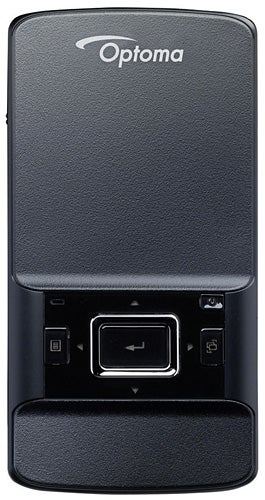
Also catching our eye on the PK201’s spec sheet are a startlingly high (for the pocket projector market) contrast ratio of 2,000:1, and an also startlingly large claimed maximum image of 70in. Both these figures – while they must be taken with a pinch of salt as manufacturer’s figures – bode well for the image’s brightness, suggesting it must be far in advance of the puny light levels emitted by the PK101.
The projector’s throw ratio is – as we would expect – set, at 1.9, with a claimed projection distance range between 1.24 and 3.24m. There’s no optical zoom available. But focusing the image is no more complicated than just turning a little wheel down the projector’s side.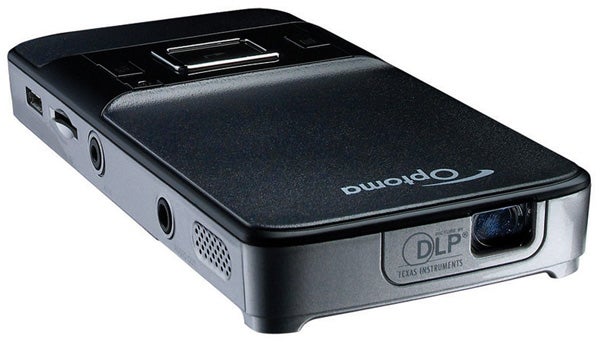
The last things you should know about the PK201 before finding out if it delivers the goods are that it has a tiny, 0.5W built-in speaker, and can be run from the mains or a supplied battery, with battery life rated at up to 1.5 hours.
Thankfully the PK201’s pictures look instantly far in advance of those of the PK101. They’re much, much brighter, for a start, meaning you can see what a picture actually contains! Provided, at least, that you try to keep your environment quite dark and don’t stretch the picture much bigger than 50in (we found the 70in claims very optimistic).
Being able to actually see pictures from the PK201 marks a very handy step forward indeed from the PK101… and, of course, allows us to judge the quality of specific picture facets.
For instance, while the PK201’s 2,000:1 contrast claim appears optimistic, its black level response is nonetheless better than usual for the pocket projection market – especially the truly tiny end of the pocket projection market where the PK201 belongs.
Couple the adequate black level with the brightness already described, and you also get a solid colour response, at least in terms of saturation levels.
Another strength finds the PK201’s pictures looking decently sharp and detailed for such a small projector.
One final strength of the projector’s performance is that it runs almost silently, even if you choose its highest lamp output setting (which we strongly recommend that you do). This compares well with the noisy running of the PK301.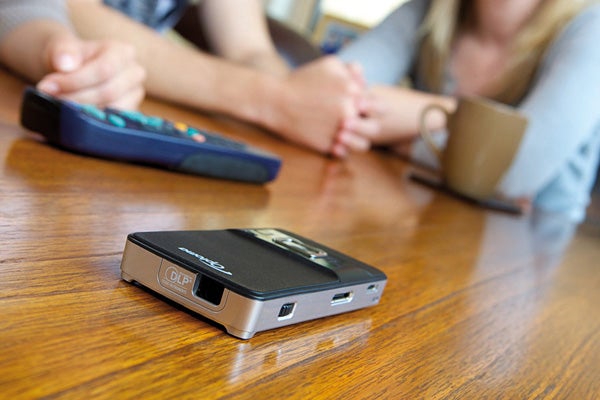
On the downside, the PK201’s pictures aren’t as bright as those of Optoma’s PK301. Though given that model’s much higher price point, this is fair enough. More alarming is the fact that the PK201’s pictures also aren’t as bright as those of Samsung’s H03 pocket projector, which we reviewed last week and which actually costs a chunk of change less than this Optoma.
Colours, meanwhile, aren’t as natural in tone as those of either the PK301 or the Samsung H03, looking a bit over-ripe and noisy. There’s also a little dotting noise in dark scenes.
Predictably, the sound from the 0.5W built-in speaker doesn’t exactly raise the roof. But it is actually clearer and thus more audible than expected, and so could fairly be considered a modest success given that it’s coming from such a tiny body.
Verdict
It’s actually the PK201’s tiny size that most defines our overall opinion of it as a product. For while Optoma’s PK301 and Samsung’s H03 perform better and, in the Samsung’s case, also represent better value, if you’re after a relatively casual projector that genuinely fits into your pocket as easily as an iPhone, it’s well worth considering.
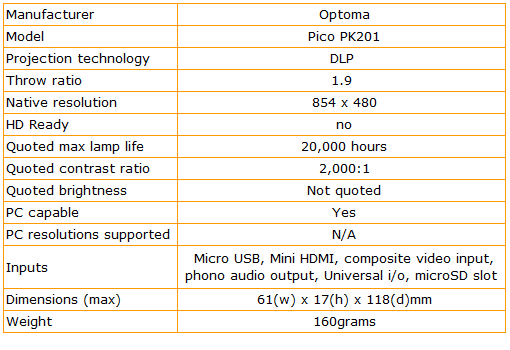
Trusted Score
Score in detail
-
Value 8
-
Features 7
-
Image Quality 7
-
Design 8

